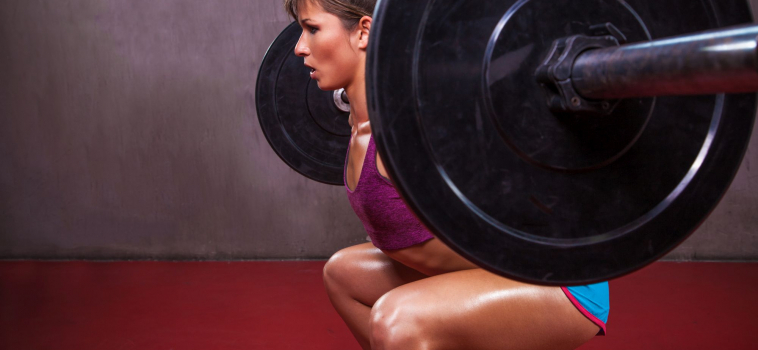There’s a reason the squat is one of the most familiar and possibly the most photographed exercise. Squatting is a great total body compound movement. It not only tones legs, but also targets abs, back, and arms.
This is the second article on improving your squatting ability. Last week, we covered strengthening your quads and back. Today we will cover hip mobility!
As a refresher, this is how to squat properly:
- Position your feet under your shoulders and point the toes straight(ish). It’s ok to point your toes outwards a little for comfort.
- Push your hips back while bending your knees. (like sitting onto a chair)
- Keep your chest out and your feet flat on the floor.
- When at the bottom, push through your heels in to the ground and stand up.
- Squeeze your butt at the top of the movement. Along with your core, you should remain in a tight position.
One common aspect that people struggle with is keeping their back upright as they go down. This can happen for a few reasons, such as weak quads, weak back, (covered in last week’s article) and/or limited hip range of motion (ROM).
Hip range of motion is absolutely crucial for being able to go deep into a squat. More specifically, as you go down into a squat, the angle between your femur (thigh bone) and pelvis decreases, this is called hip flexion. Not having adequate hip flexion and squatting too low will cause the slack to be taken up by the knees and lower back. Over time, the added stress on the joints can lead to injury.
Thankfully, there are steps you can take to work towards achieving greater hip range of motion. The following are a few exercises you can do to BEFORE your squat session to achieve your optimal ROM in that workout. It is a good idea to repeat these stretches daily until you are satisfied with your hip mobility, after which you can do it from time to time for maintenance.
Psoas Stretch
This stretch is usually avoided because it can be painful, but it is crucial to getting good squat depth.
There are two variations. The first is slightly easier and the second is less forgiving.

- Get into a half kneel position (bottom of a lunge). You will be stretching the back leg.
- You can hold onto a wall or bench to stabilize you.
- Place the hand of the back leg on your glute and gently push your hip forward while squeezing the glute.
- As you push your hip forward, lean your torso slightly back.
- Hold 30 seconds to 1 minute.
- Repeat on other side.
You are looking for a stretch on the front of your back leg.
Couch Stretch
If the Psoas Stretch is not enough to feel the stretch or are glutton for pain, try this variation. The steps are the same but instead of letting that back foot rest behind you, it will be up on bench, wall, or couch.
- From a standing position, place the top of your foot on bench.
- Your leading leg will be in front, and you will go down as if in a lunge.
- Squeeze the glute of the back leg.
- Hold 30 seconds to 1 minute.
- Repeat on the other side.
Pigeon Pose (Modified)
This stretch originates from a version of the yoga position. It is meant to help open up your hip by mimicking the bottom of a squat. That being said, it is not always comfortable and some will barely be able to move their hip. That is ok, start with what you have and do what you can.
- As with the Psoas Stretch get into the bottom of a lunge.
- You want the leading leg to but up as far as possible while still keeping your foot flat.
- Take the hand of the leading side and place it on your ankle, your elbow should be on the inside of your knee.
- Let the back thigh go down towards the floor at an angle.
- Use the hand on the ankle to keep your foot flat as you push your knee out with the elbow.
- At this point you should feel a stretch.
- Make clockwise then counter clockwise circles with your hip. (Will not feel good)
- Do 5-10 circles in both directions before switching legs.
For a visual of this, watch this video from Dr. Kelly Starrett:
NOTE: The video shows a lot of movements you can do while in the stretch, though a great sequence to do, it is not necessary to cover all.
When done consistently, these two movement will unlock Ranges of Motion in the hip you may not know you were capable of. Doing them normally will allow for great depth in the squat, but more importantly more force generation which will help you push more weight in the long run.





